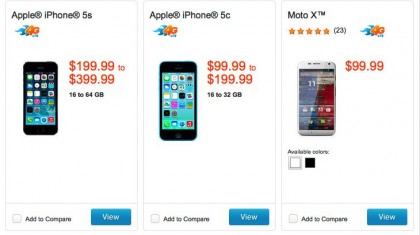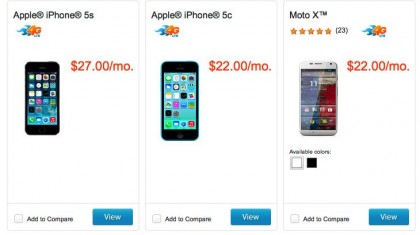AT&T Next: what you need to know
The give and take of AT&T's early upgrade plan

Every major US carrier now has an early upgrade program. T-Mobile got the ball rolling with Jump, followed by AT&T Next, Verizon Edge and Sprint One Up.
Each is nuanced in its own wireless-provider way, and here we endeavor to lay out everything you need to know about AT&T Next.
AT&T Next has some good, and it has some ugly. The payment structure may infuriate some while the allure of the having a new device in hand every year will entice others.
Read on to get the Next lowdown.
What is AT&T Next?
Next is AT&T's early upgrade program. It lets customers purchase newer smartphones and tablets without having to wait until they're eligible for an upgrade or having to pay an early upgrade fee (ETF).
It was announced mere days after T-Mobile unveiled its early upgrade program, called Jump. Next went into effect July 26.
Next lets customers purchase a smartphone or tablet over the course of 20 months by paying monthly installments that roughly add up to the value of the device. However after 12 months, a Next customer can trade in their device for a new, eligible device. Monthly installments for the old device are waived and a new set of payments start over for the next phone or tablet.
Get daily insight, inspiration and deals in your inbox
Sign up for breaking news, reviews, opinion, top tech deals, and more.
How does Next work?
Next customers must agree to a 20-month, 0% APR installment agreement as well as a wireless agreement, which means voice/data since it Next covers smartphones and tablets.
At sign up, a Next customer can buy a new device without having to pay activation fee or the $36 upgrade fee associated a standard upgrade. There's no financing fee either, and Next participants are only on the hook for taxes upfront.
A call to an AT&T store revealed that for an iPhone 5S, a customer who signs up for Next can expect to walk out of the store after paying $60 in tax for a 16GB phone. Under a standard agreement, a customer would have to pay about $260 (subsidized cost, etc.) in-store for the same device.

A retail source of ours explained that if you sign up for a new phone at an authorized AT&T retailer (essentially a franchise store), your new phone will be mailed to you, a process that can take anywhere from 24 hours to three to five business days. AT&T wants to keep its inventory secure, which is why it won't let you walk out with a phone or tablet after only paying tax.
Our source said that if you buy your Next phone at a corporate store, you can leave with with phone in hand.
With the new phone, a monthly installment fee is attached to a customer's regular bill. AT&T has a full run down of monthly installment prices for smartphones here and tablets here. However, for example, an iPhone 5C would cost $22/month, a Galaxy Note 3 $14/month, an iPad Air $31.50/month and a Galaxy Note 8.0 $25/month.
After 12 months, a customer can opt to upgrade their device. But for the early upgrade to work, AT&T requires a trade-in with the customer's current phone or tablet in "good and functional condition." Accounts must be in good standing, i.e. you've consistently paid your monthly bills on time and aren't in the hole.

AT&T Next also offers the option to keep a phone after all of 20 monthly installments have been paid. The phone belongs to the customer, though they'll still have to pay for a service agreement.
If someone wants to jump the Next ship and cancel, they are required to pay off the device per the 20-month agreement. Once the device is paid off, the phone belongs to the customer.
Michelle was previously a news editor at TechRadar, leading consumer tech news and reviews. Michelle is now a Content Strategist at Facebook. A versatile, highly effective content writer and skilled editor with a keen eye for detail, Michelle is a collaborative problem solver and covered everything from smartwatches and microprocessors to VR and self-driving cars.
